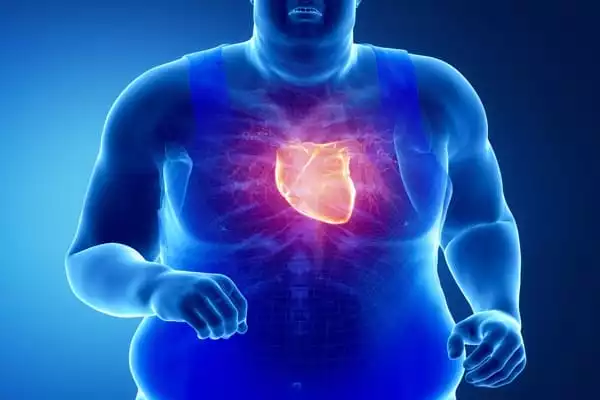Obesity in children is a complicated health issue. It occurs when a child’s weight is significantly higher than the normal or healthy weight for his or her age and height. The causes of excess weight gain in adolescents are similar to those in adults, and include factors such as behavior and genetics. Obesity is also influenced by a person’s community, which can have an impact on a person’s ability to make healthy choices.
Obesity among children and adolescents increased from 19 percent prior to the pandemic to 22 percent, which could be bad news for children’s cardiovascular systems both now and in the future. According to new research from the University of Georgia, this could be bad news for children’s cardiovascular systems both now and in the future.
According to a Centers for Disease Control and Prevention study, the percentage of obese children and adolescents increased from 19% pre-pandemic to 22 percent. And the rate of increase in body mass index (BMI) more than doubled.
The study, which was published in Pediatric Obesity, measured abdominal visceral fat levels and arterial stiffness in over 600 children, adolescents, and young adults. Visceral fat is fat that accumulates in the abdomen and infiltrates vital organs. Because of arterial stiffness, the cardiovascular system has to work harder to pump blood throughout the body.
It’s a very pervasive, frightening condition in youth, even more so than in adults. Many body systems degrade at a faster rate if the disease occurs during the growing years rather than in adulthood. This disease affects the brain, kidneys, bones, and liver. It emphasizes the importance of learning how to prevent disease.
Joseph Kindler
The researchers discovered significantly higher levels of visceral fat and arterial stiffness in overweight children, implying that abdominal fat may contribute to cardiovascular problems in children.
“The stiffer the artery, the faster blood will move through those blood vessels, and that can be detrimental and overstress our system,” said Joseph Kindler, corresponding author of the study and an assistant professor of nutritional sciences in the College of Family and Consumer Sciences. “Unfortunately, as these issues pile up, it’s a game of dominoes. When one of them fails, the rest of the systems become overburdened. That’s when serious health problems can arise.”
Although research on cardiovascular risks in children and adolescents is limited, researchers believe that the negative changes in the cardiovascular system that lead to disease and heart attacks begin in childhood and adolescence.
“We want to keep cardiovascular disease at bay. We want our children to grow up to be strong and healthy adults “Kindler explained. “But, in order to do so, we must first understand the underlying factors that contribute to poor health outcomes so that we can target them, whether through diet, physical activity, sleep, or some other intervention. Identification is critical, followed by intervention.”

Excess weight gain is influenced by behaviors such as eating high-calorie, low-nutrient foods and beverages, taking medications, and sleeping patterns. Obesity can be caused by a lack of physical activity and spending too much time sedentary activities such as watching television or other screen devices.
Consuming healthy foods and being physically active, on the other hand, can help children grow and maintain a healthy weight. The ability to balance the energy or calories consumed from foods and beverages with the calories burned through activity helps to prevent excessive weight gain. Furthermore, eating healthy foods and exercising help to prevent chronic diseases such as type 2 diabetes, some cancers, and heart disease.
Arteries are stiffer in children with high BMI
The researchers used a technique known as dual-energy X-ray absorptiometry, or DXA, to measure the children’s body fat levels. It’s a technique that’s commonly used in bone and hormone research. It’s also becoming more popular in body fat research because it provides scientists with the same data as traditional scans. However, it is faster, less expensive, and does not require high doses of radiation, as do other scans. They also timed how long it took participants’ blood to travel from the center of their bodies to their lower limbs, which is a common way of assessing arterial stiffness.
“One really important take-home message is that arterial stiffness, which predisposes children to cardiovascular disease later in life, appears to be most pronounced in people with a high BMI,” Kindler said.
Another source of concern is that more children are being diagnosed with Type 2 diabetes, a condition that was previously only seen in adults. Obesity is a major risk factor. The disease had been diagnosed in 145 of the study’s participants.
“It’s a very pervasive, frightening condition in youth, even more so than in adults,” said Kindler. “Many body systems degrade at a faster rate if the disease occurs during the growing years rather than in adulthood. This disease affects the brain, kidneys, bones, and liver. It emphasizes the importance of learning how to prevent disease.”















